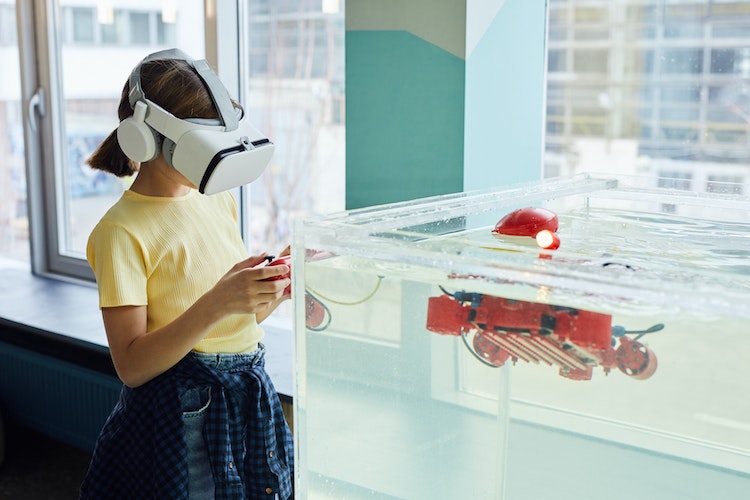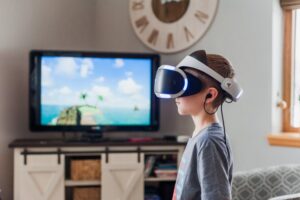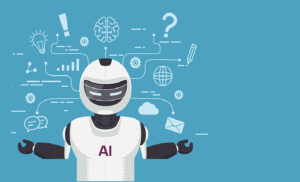Artificial intelligence (AI) has significantly changed and enhanced digital interactions, especially when paired with extended reality (XR) applications.
Extended reality encompasses virtual reality (VR), mixed reality (MR) and augmented reality (AR). Here are some exciting and fulfilling digital interactions that can occur if you use XR with AI.
1. Generating 3D Images
“Researchers have combined AI with augmented and virtual reality applications, resulting in images that are 3D with better contrast and color.”
Even as augmented and virtual reality applications become increasingly widespread and advanced, one of their shortcomings is that you’ll still only see two-dimensional images when using them. However, researchers at Stanford University are trying to change that by using AI to create 3D content. They believe their results could be more visually realistic and less prone to causing eyestrain than current offerings.
The research team created a neural holographic display by training an AI neural network to mirror the real-world physics of whatever people saw when they used the device. This approach created real-time images. The group developed a calibration strategy that provided nearly instantaneous feedback to improve the output, too.
They used an AI algorithm and the calibration technique and ran them at the same time as the images people saw while using XR. This method generated improved visuals that were clearer, more colorful and had better contrast. The imagery was also highly realistic.
This innovation could influence industries and applications ranging from education to manufacturing. It could be especially beneficial for allowing people to experience rich, immersive content that helps them do their jobs better or learn faster.
Consider an example where medical students use VR and AI to learn about the human body and how specific organs work. 3D images are particularly helpful for giving people accurate perspectives that could eventually influence their patient care decisions.
2. Increasing Workplace Engagement
“Many companies use AI and XR applications for employee onboarding, continuing education or giving workers safe, controlled environments where they can practice challenging conversations and get near-immediate feedback.”
Technological advancements have significantly increased the chances that people will attend hybrid events for work instead of going to those that solely occur in person.
Depending on the ticket a person purchases, their experience may solely consist of online gatherings and events, or it could have a mixture of online and offline activities.
The rise of XR also means that people are more likely to stay engaged and entertained throughout the event. Many organizers plan gamification elements, such as scavenger hunts or opportunities for participants to earn points for meeting people or otherwise taking part in the various diversions. Donning a VR headset or pair of AR glasses could provide people with more memorable experiences, even if they’re primarily participating in workplace conferences by sitting in front of their computers at home.
Many companies are also using AI and XR applications for employee onboarding, continuing education or giving workers safe, controlled environments where they can practice challenging conversations and get near-immediate feedback.
Imagine a situation where you use an AR application to learn to operate a new industrial machine and see a virtual safety checklist floating in front of you before you begin. AI algorithms might also tailor the content to your current knowledge level, allowing you to skip over the overly basic or irrelevant material.
A company called Striv, which specializes in VR training for workers, also uses generative AI to improve its immersive scenarios. That approach enhances the associated animations, storylines and more.
3. Reducing Geographical Barriers
“Telepresence robots allow you to be in two places at once, and you can control some of them with VR headsets.”
Ever wish you could be in two places at once? XR and AI applications can allow that, specifically if they involve telepresence robots. These machines typically feature bases that move freely within various indoor environments and attached screens that show a user’s face or an avatar of themselves. You might use a telepresence robot if a chronic illness makes attending work or school daily challenging.
In such cases, the robot is physically in the room with your colleagues or fellow students while you’re in an off-site location but visible on the robot’s screen. French company Pollen Robotics offers Reachy, a telepresence robot you can control while wearing a VR headset. The machine works over a reliable internet connection, and your distance from Reachy has no bearing on how well it can perform its tasks.
Reachy can do everything from writing documents to playing games. Telepresence robots like this one are costly, but they could be life-changing if you often find that geographical boundaries prevent you from engaging with others.
Authorities in the Japanese city of Kumamoto plan to use telepresence robots to address student absenteeism due to anxiety or bullying. These machines will have cameras, microphones and speakers that enable two-way interactions between users and others. Previous studies in this area indicate this high-tech approach to learning can help students feel more self-confident and eager to learn.
Exciting Opportunities to Merge XR and AI
Applications that combine extended reality and artificial intelligence are not yet widespread. But the three examples detailed here illustrate why exploring and capitalizing on options that use both technologies in single applications makes sense. Doing that could help people enjoy highly realistic experiences that help them learn, grow and improve their connections with others.
As more decision-makers become interested in these technologies used together, the ways to try them should become more accessible — and perhaps more affordable.










